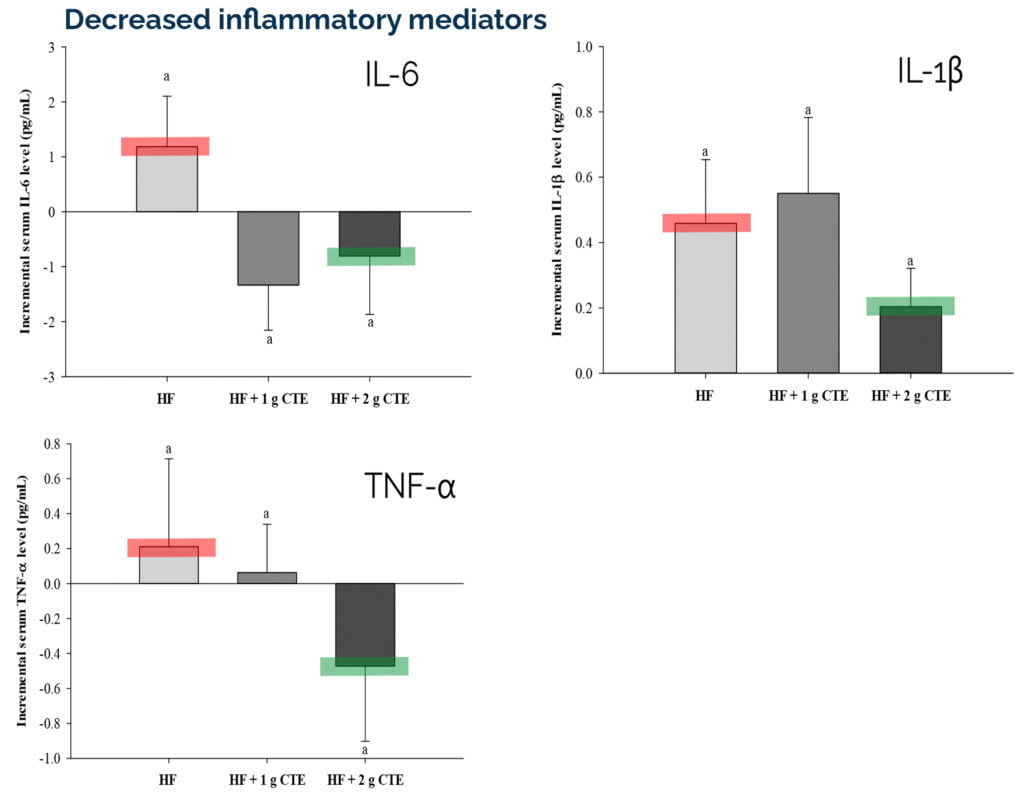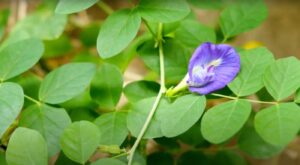Butterfly pea flowers curb the body’s response when eating fat-rich meals:
- reducing free fatty acids circulating in the blood
- reducing triglycerides circulating in the blood
- maintaining & enhancing blood antioxidant capacity after a high-fat meal
- increasing the activity of antioxidant enzymes in the blood
- exhibiting a trend towards reduced inflammatory mediators (not statistically significant)
Why is this important ?
Obesity, chronic inflammation, and diabetes are interconnected conditions. The development of these diseases also has a large lifestyle and dietary component.
The World Health Organization (WHO) estimates that more than 2 billion adults are overweight or obese today. The International Diabetes Federation (IDF) estimates that 374 million people are living with prediabetic conditions, such as impaired glucose tolerance. It has been well documented that inflammation plays a role in the development of cardiovascular disease associated with both diabetes and obesity.
Treatment with butterfly pea flower extract has had positive effects on fat storage and mobilisation, hyperglycemia, and reducing inflammatory mediators.
This is the first study in humans that investigates the effects of butterfly pea flowers when eating high-fat meals. Previous studies have focussed on high-sugar diets.
People approaching an unhealthy weight tend to have increased insulin levels, called hyperinsulinemia. This is due to the body’s response to increased blood sugar levels and circulating fatty acids or triglycerides. The combination of these factors results can result in an increased risk of heart disease, liver and kidney dysfunction, and development of type 2 diabetes.
By reducing the triggers for these diseases, the bioactive components in butterfly pea flowers (potent antioxidants) can help: maintain or reduce blood glucose and insulin levels, enhance our natural antioxidant capacity, and reduce inflammation.
Drinking a strong cup of butterfly pea tea is a natural way to keep ourselves healthy by allowing our bodies to cope better with oxidative damage. This has implications in slowing or preventing some forms of heart disease, dementia, diabetes, and the aging process.
The study:
Thilavech, T, Adisakwattana, S, Pilailak, C, Radarit, K, Jantarapat, K, Ngewlai, K, Sonprasan, N, Chusak, C, 2021, ‘Clitoria ternatea Flower Extract Attenuates Postprandial Lipemia and Increases Plasma Antioxidant Status Responses to a High-Fat Meal Challenge in Overweight and Obese Participants’ Biology (Basel). vol 10, 975 Link
Type of study : in vivo randomised crossover trial
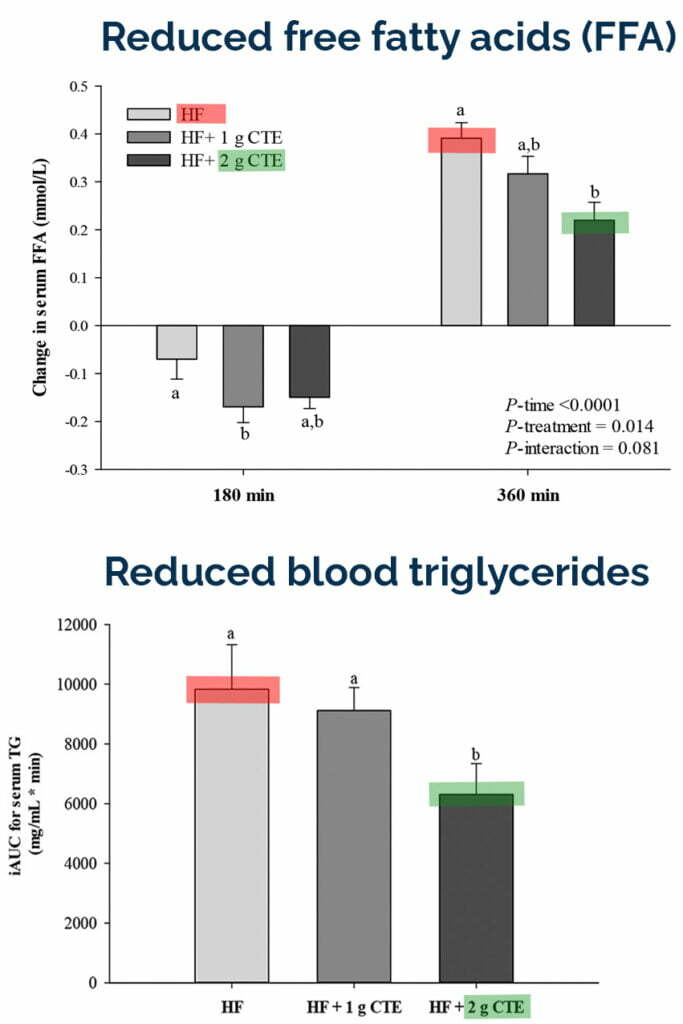
These two graphs show the body’s response to a fat-rich meal. Increased free fatty acids (FFA) and triglycerides were detected in the blood of overweight participants after eating a high-fat meal. Increased FFA and triglycerides increase the risk of cardiovascular disease, type 2 diabetes, and some types of liver injury.
Drinking 2g butterfly pea flower extract (CTE = Clitoria ternatea extract) significantly reduced the concentration of free fatty acids and triglycerides in the blood after eating a high-fat meal (green) compared to controls (red).
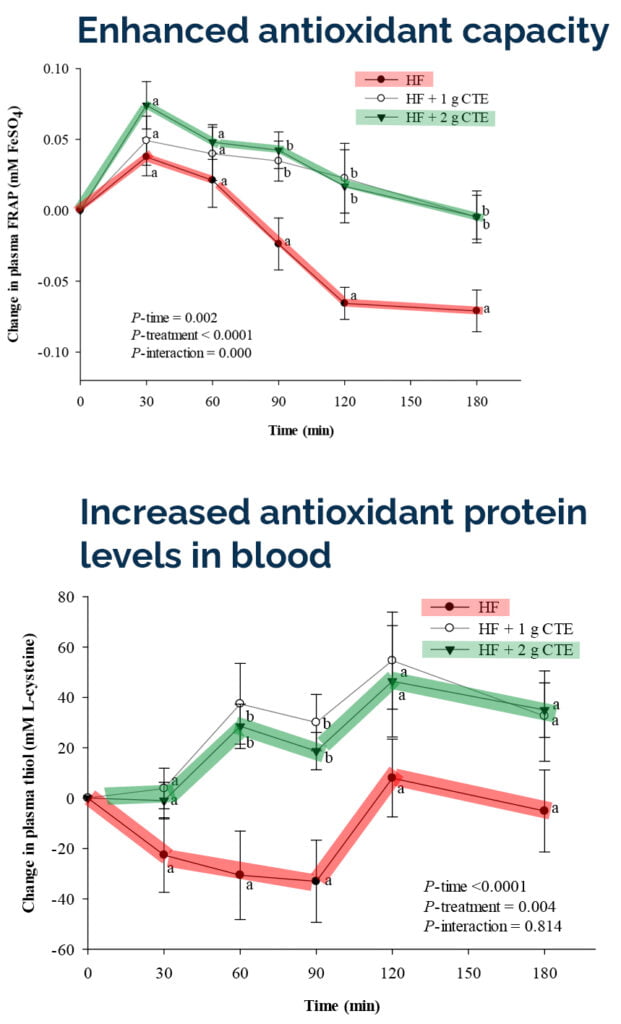
The following two graphs demonstrate that drinking butterfly pea flower extract significantly improved blood antioxidant capacity after eating a high fat meal (green line vs red line). The same pattern observed when ingesting a sugary meal (see first article).
Protein thiols increased when drinking butterfly pea flower extract (green line vs red line). Thiol groups of antioxidant proteins help maintain the antioxidant capacity of blood; the more thiols there are, the better our blood can cope with oxidative challenges.
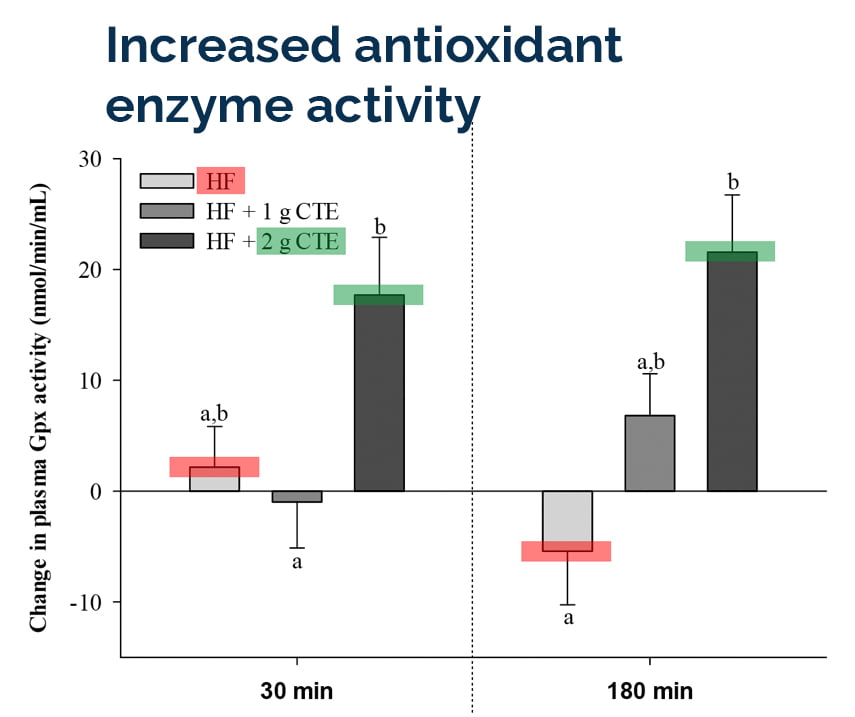
Not only did butterfly pea extract increase protein thiol levels, it also directly increased the activity of antioxidant enzymes such as glutathione peroxidase (Gpx). Drinking 2g of butterfly pea increased Gpx activity in blood (green bars) compared with control samples (red bars), 30mins after eating a high-fat meal.
Researcher also observed a reduction in inflammatory mediators present in the blood (interleukin-6, interleukin-1-beta, tumour necrosis factor-alpha), although this trend was not statistically significant (green bar vs red).
